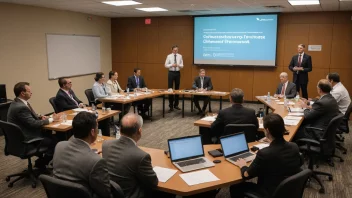In today's increasingly digital world, remote development has become a norm rather than an exception. As teams spread across different locations, managing remote development environments efficiently is crucial for maintaining productivity and collaboration. This article will explore some best practices that can help streamline remote development, ensuring that teams can work effectively while minimizing potential pitfalls.
1. Standardize Your Development Environment
Establishing a standardized development environment is essential for consistency across your team. This can be achieved by using tools like Docker or Vagrant, which allow developers to replicate the same setup on their local machines. Benefits of a standardized environment include:
- Reduced setup time for new team members.
- Minimized differences in development configurations.
- Easier debugging and testing processes.
2. Utilize Version Control Systems
Version control systems, such as Git, are vital for managing code in remote environments. They allow developers to track changes, collaborate on projects, and revert to previous versions if needed. Key aspects to focus on include:
- Creating clear branching strategies (e.g., Git Flow).
- Regularly merging code to avoid large conflicts.
- Using pull requests for code reviews and discussions.
3. Implement Continuous Integration and Continuous Deployment (CI/CD)
CI/CD practices automate the process of integrating and deploying code changes, which is especially beneficial in remote environments. This ensures that code is tested and deployed consistently. Important steps include:
- Setting up pipelines using tools like Jenkins, CircleCI, or GitHub Actions.
- Automating tests to catch errors early in the development process.
- Deploying to staging environments before going live.
4. Foster Communication and Collaboration
Effective communication is the backbone of successful remote development. Utilize tools like Slack, Microsoft Teams, or Zoom for real-time communication and collaboration. Essential practices include:
- Regular stand-up meetings to track progress.
- Using project management tools like Jira or Trello to keep tasks organized.
- Encouraging open discussions and feedback among team members.
5. Prioritize Security and Access Control
Security is paramount when managing remote development environments. With sensitive data and code being accessed remotely, it’s crucial to implement strong security measures. Consider the following:
- Using VPNs for secure connections to development resources.
- Implementing role-based access control to limit permissions.
- Regularly updating software and dependencies to mitigate vulnerabilities.
By standardizing environments, leveraging version control, implementing CI/CD, fostering communication, and prioritizing security, teams can effectively manage remote development environments. As remote work continues to evolve, these best practices will ensure that development processes remain efficient, collaborative, and secure.






